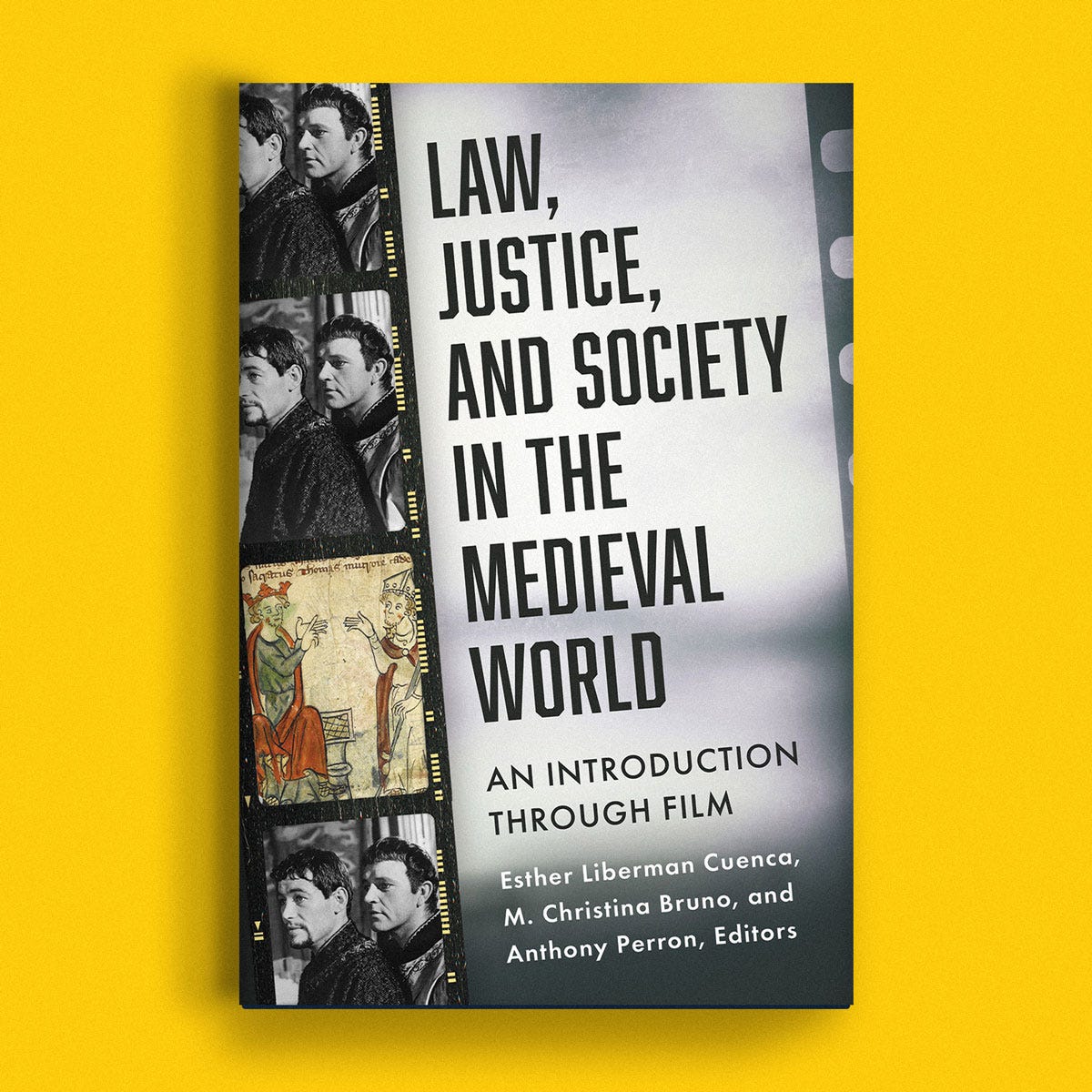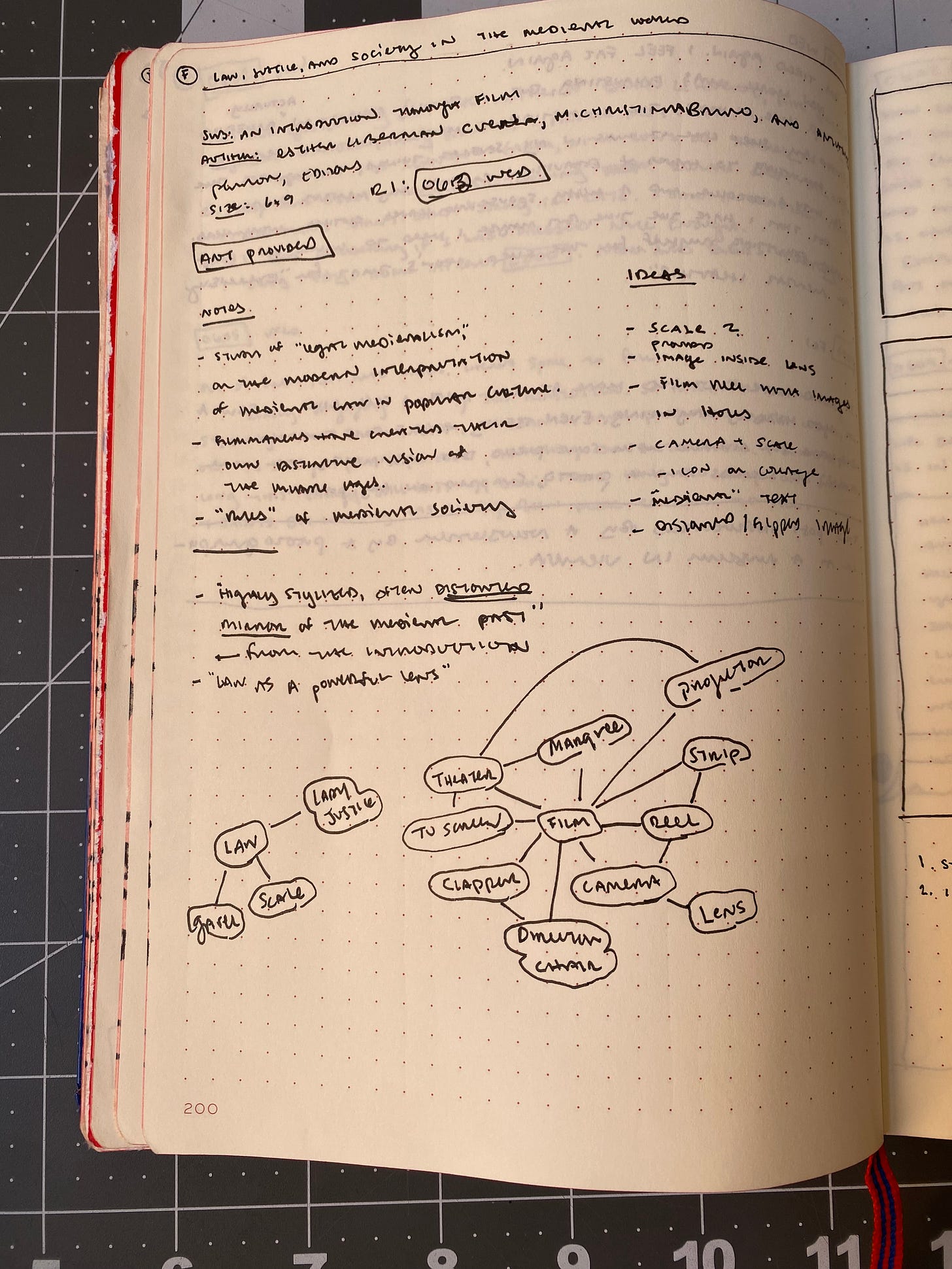How to Design A Book Cover: Law, Justice, and Society in the Medieval World
Sketches, Drafts, Revisions, and More
Hello! Welcome to How to Design a Book Cover, a series from A Book Designer’s Notebook in which I walk you through a particular cover design from start to finish. This is a bonus series for paid-tier subscribers.
In this newsletter:
Brainstorms and sketches
Early and unused cover drafts
Book cover animations
The real presentation I sent clients
Revision rounds
Photoshop layers screenshot
This week, I’m sharing the process behind my cover for Law, Justice, and Society in the Medieval World: An Introduction Through Film by Esther Liberman Cuenca, M. Christina Bruno, and Anthony Perron.
The Brief
When I work with publishers, I receive a creative brief that usually shares a description of the book, technical specifications, potential art direction from the author, and art direction from the press itself. Here’s the description for this book:
This coursebook is the first full-length study of “legal medievalism,” or the modern interpretation of medieval law in popular culture. Through their cinematic dramatizations of medieval law, justice, and society, filmmakers have created their own distinctive vision of the Middle Ages. Each of the 20 chapters in this book represents an original contribution to our understanding of how medieval regulations, laws, and customs have been depicted in film. This book offers a window into the “rules” of medieval society, and it reflects on the connections, disconnections, and divergences of medieval and modern culture.
This book includes analyses of recent and older films, avant-garde as well as popular cinema. Films discussed in this book include Braveheart (1995), Kingdom of Heaven (2005), The Passion of Joan of Arc (1928), The Last Duel (2021), The Green Knight (2021), The Little Hours (2017), and The Adventures of Robin Hood (1938).
The chapters in this book may discuss the contemporary context of the film in question, the medieval literary or historical milieu that the film references, and the lessons the film can teach us about the medieval world. Each chapter is followed by documentary sources from the Middle Ages and reading questions to prompt critical reflection. The sources selected for inclusion run the gamut—from narratives to prescriptive regulations. But all highlight the types of rules, guidelines, and legal practices that may have, at one time, governed the lives of real medieval people.
The publisher supplied this image, from Becket, to use on the cover:
Notes & Sketches
I begin every book cover design inside my notebook. It’s important to note that for me, this stage begins with what is essentially a brain dump. There are a lot of bad ideas and basic connections that simply must come out of my head in order to make progress.
When a publisher provides an image like this one, my sketches tend to be a little … sparse. For better or worse, I tend to jump into Photoshop quicker.
Here are what my pages for Law, Justice, and Society in the Medieval World look like.
Digital Sketches
After marking up a few pages inside my notebook, my process usually involves the creation of several digital sketches in Photoshop. I’m not worried about perfection yet—this part of the process is about getting ideas and sketches from my notebook in and pursuing any new ideas I have in the process, and quickly. This usually results in a “sketches” folder with 20–30 covers of varying degrees of quality and completion. There are always stinkers.






